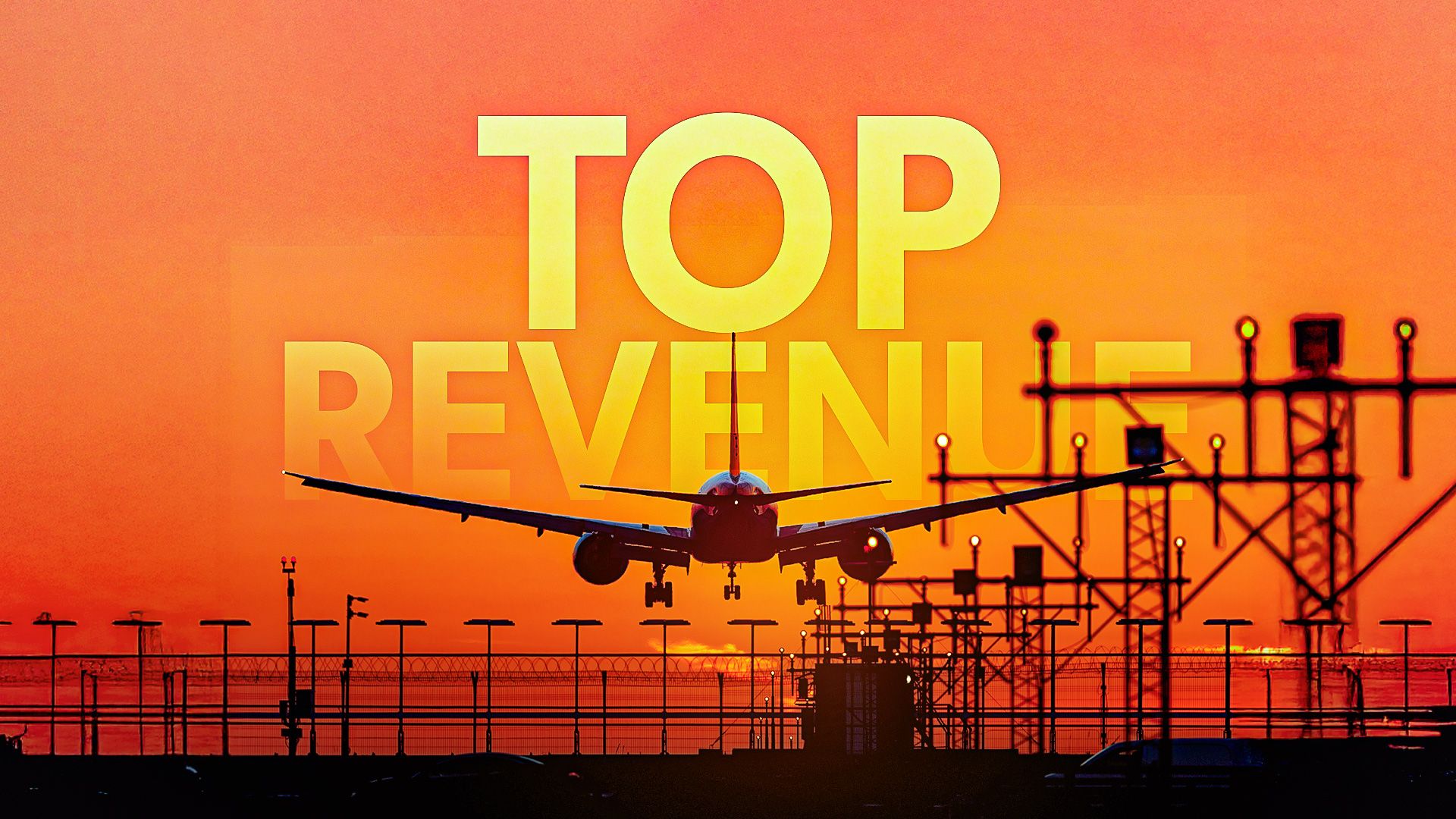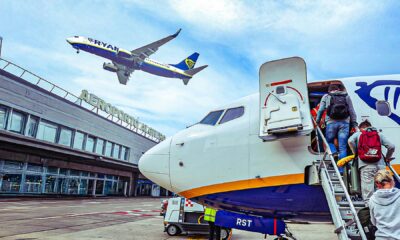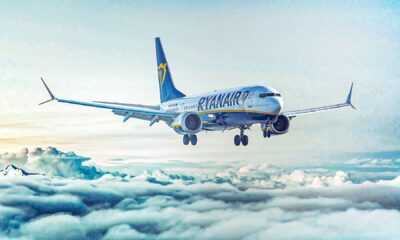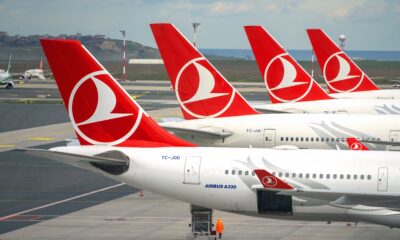World
Turkish Airlines Tops Europe’s Profitability Rankings in 2025

Europe’s aviation sector is experiencing a robust recovery, with airlines rebounding strongly from the challenges posed by the pandemic. As of 2025, the question of which airline leads in profitability is particularly pertinent. Three major players stand out: the ultra-low-cost carrier Ryanair Group, the legacy powerhouse International Airlines Group (IAG), and the ambitious Turkish Airlines. Their differing business models and performance metrics highlight the nuances of profitability in the aviation industry.
Ryanair: Dominating the Low-Cost Sector
Ryanair continues to assert its dominance in the low-cost airline segment. In the fiscal year ending March 2024, the Irish carrier reported a profit after taxation of €1.92 billion on revenues of €13.44 billion. The airline achieved an impressive load factor of approximately 94%, reflecting high demand for its services. Ryanair’s business model, characterized by high aircraft utilization, minimal frills, and stringent cost management, has proven effective.
According to a report from Gridpoint Consulting, Ryanair boasts exceptional pre-tax profit margins among European airlines, largely due to its low debt levels and substantial cash reserves. The airline transported 183.7 million passengers during the fiscal year, with an average fare increase of around 21% compared to the previous year. This trend positions Ryanair as a sustained leader in profitability for 2025 and likely into 2026.
IAG: A Legacy Group With Strong Performance
The International Airlines Group (IAG), which encompasses airlines such as British Airways, Iberia, and Vueling, has also demonstrated impressive financial results. In 2024, IAG reported pre-tax profits of €3.8 billion, making it a prominent player among European airline groups. With an operating margin of 13.8% and a return on capital of 17.3%, IAG showcases the strength of legacy brands in recovering profitability.
While the group performs well overall, the evaluation of individual carriers within IAG reveals varying profitability levels. For instance, British Airways achieved a margin of 14.2%, and Iberia reported 13.6%. However, when analyzing profitability on a singular airline basis, IAG’s collective strength does not translate into a single, dominant airline outperforming others like Turkish Airlines.
Turkish Airlines: The Unexpected Leader
Turkish Airlines, the national flag carrier of Türkiye, has emerged as Europe’s most profitable airline when excluding low-cost carriers like Ryanair and treating IAG’s airlines separately. In 2024, Turkish Airlines reported a net profit of approximately €2.06 billion (equivalent to US$2.4 billion) amidst challenging global conditions. Its revenues reached US$22.7 billion, marking a year-on-year growth of just over 8%.
The airline’s cargo division significantly contributed to its profitability, with cargo revenues increasing by around 35%. Turkish Airlines also reported an Earnings Before Interest, Tax, Depreciation, Amortisation, and Rent (EBITDAR) of US$5.7 billion, achieving a margin of 25.3%. The carrier’s cargo operations have positioned it as the third-largest air cargo operator globally, according to the International Air Transport Association (IATA).
What sets Turkish Airlines apart is its extensive network, which serves all continents and holds the Guinness World Record for the most destinations served globally. This operational scale, combined with its cargo strength and improving financial health, firmly establishes Turkish Airlines as the leading full-service airline in terms of profitability in 2025.
Understanding Business Models in Aviation
The distinctions between low-cost, legacy group, and individual airlines are crucial when discussing profitability. Ryanair’s low-cost model thrives on minimal turnaround times and high load factors, leading to substantial margins in short-haul markets. Conversely, IAG’s legacy group model encompasses multiple airlines and premium services, which, while offering opportunities, also introduces complexities that can affect overall profitability.
Turkish Airlines stands out as a full-service carrier that effectively integrates cargo operations and global reach, distinguishing itself from its low-cost and legacy counterparts. Each airline’s unique approach to business contributes to its financial outcomes, making it essential to evaluate profitability within the appropriate context.
In summary, Ryanair leads the low-cost market, IAG excels among large legacy groups, but Turkish Airlines emerges as the most profitable single airline in Europe when considering full-service operations. Observers in the aviation industry should take note of these dynamics when evaluating competitive strategies and profitability benchmarks.
As the industry looks ahead into 2025 and beyond, several factors will influence profitability across European airlines. Key considerations include load factors, fare pressures, fuel hedging strategies, and cargo market dynamics. For Ryanair, potential risks include fare erosion and rising operating costs. For IAG, the focus will be on recovering premium traffic and managing operational efficiencies. Turkish Airlines must navigate challenges related to sustaining cargo growth and geopolitical risks while continuing to improve its balance sheet.
In a broader context, profitability margins remain under scrutiny. A report noted that, despite global airline profits reaching a record US$36.6 billion in 2024, net margins averaged only around 3.5%, indicating ongoing pressures within the industry. For the leading airlines like Turkish Airlines, Ryanair, and IAG, adept management of these challenges will be essential to maintaining their positions at the forefront of European aviation profitability.
-

 World2 days ago
World2 days agoCoronation Street’s Shocking Murder Twist Reveals Family Secrets
-

 Entertainment4 months ago
Entertainment4 months agoKate Garraway Sells £2 Million Home Amid Financial Struggles
-

 Entertainment3 months ago
Entertainment3 months agoAnn Ming Reflects on ITV’s ‘I Fought the Law’ Drama
-

 Health3 months ago
Health3 months agoKatie Price Faces New Health Concerns After Cancer Symptoms Resurface
-

 Entertainment3 weeks ago
Entertainment3 weeks agoCoronation Street Fans React as Todd Faces Heartbreaking Choice
-

 World3 weeks ago
World3 weeks agoBailey Announces Heartbreaking Split from Rebecca After Reunion
-

 World5 days ago
World5 days agoKevin Sinfield Exceeds Fundraising Goal Ahead of Final Marathons
-

 Entertainment3 months ago
Entertainment3 months agoCoronation Street’s Carl Webster Faces Trouble with New Affairs
-

 Entertainment4 days ago
Entertainment4 days agoTwo Stars Evicted from I’m A Celebrity Just Days Before Finale
-

 Entertainment3 months ago
Entertainment3 months agoWhere is Tinder Swindler Simon Leviev? Latest Updates Revealed
-

 Entertainment4 months ago
Entertainment4 months agoMarkiplier Addresses AI Controversy During Livestream Response
-

 Science2 months ago
Science2 months agoBrian Cox Addresses Claims of Alien Probe in 3I/ATLAS Discovery




















